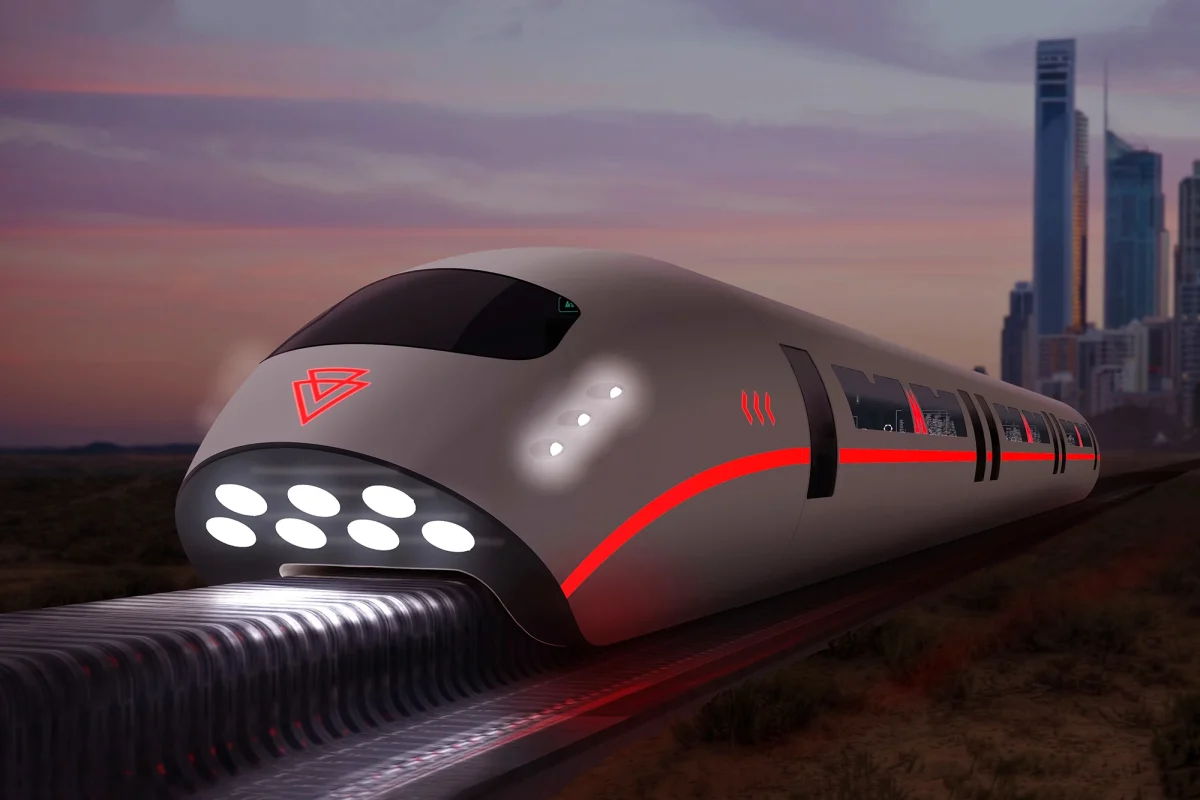Magnetic Levitation (Maglev) trains represent a groundbreaking leap in transportation, relying on the power of magnetism to propel trains at incredible speeds without the need for wheels. Unlike traditional trains that depend on friction between wheels and rails, Maglev trains float above the track, reducing drag and offering a smoother, more efficient ride. This innovative design has the potential to transform the future of transportation by increasing speed, reducing environmental impact, and enhancing urban mobility.
At the heart of Maglev technology is the principle of electromagnetic force, which allows the trains to levitate and move forward without touching the track. There are two main types of Maglev systems that are used today: Electromagnetic Suspension (EMS) and Electrodynamic Suspension (EDS). In the EMS system, electromagnets are placed on the train’s undercarriage, and these magnets attract steel rails beneath the train, causing it to hover just above the track. The magnets adjust their strength in real-time to keep the train stable and ensure a smooth ride. The EDS system, on the other hand, uses superconducting magnet, meaning it can produce magnetic fields that are significantly stronger – up to ten times more powerful than standard electromagnets when cooled to extremely low temperatures, below -450 degrees Fahrenheit (-298 degrees Celsius). This system requires the train to reach a certain speed before it begins to levitate, but once it does, the train can glide forward with little to no resistance.
Both systems rely on linear motors to generate motion, and by altering the polarity of the magnets, the train is able to accelerate and decelerate rapidly. The lack of friction between the train and the track allows Maglev trains to achieve astonishing speeds. For example, Japan’s L0 Series Maglev can reach speeds of up to 603 km/h (375 mph), making it one of the fastest ground-based vehicles in the world.
One of the significant benefits of Maglev trains is their environmental impact. They consume less energy compared to conventional trains or airplanes, especially on shorter routes. Since they are powered by electricity, their environmental footprints can be further reduced when renewable energy sources are used. Additionally, the absence of direct contact between the train and the track means less noise and vibration, making them a more peaceful mode of transportation.
Maglev technology has already been implemented in several places around the world, with notable successes. The Shanghai Maglev in China, for example, connects the city’s airport to the downtown area, covering 30.5 kilometers in just 8 minutes at speeds of up to 431 km/h (267 mph). This project demonstrates the potential of Maglev trains to significantly cut travel times, especially in densely populated areas where conventional trains and cars are stuck because of heavy traffic. In the future, Maglev systems could be expanded to cover longer intercity distances, providing an efficient and eco-friendly alternative to air travel.
However, despite these advantages, Maglev trains have not yet achieved widespread global adoption. One of the primary challenges is the cost of infrastructure. Maglev tracks must be specially designed and constructed, which makes them more expensive to build compared to conventional rail systems. While Maglev trains themselves are energy-efficient and require less maintenance due to the lack of mechanical wear, the overall costs of building and maintaining a Maglev system remain high. Additionally, the technology is still relatively new, and governments may be hesitant to invest in large-scale Maglev projects without clear evidence of long-term benefits.
Despite these challenges, the future of Maglev technology looks promising. As countries continue to find more environmentally-friendly and efficient transportation solutions, Maglev systems offer a viable option. Japan is currently developing its Chūō Shinkansen, a Maglev line that will connect Tokyo and Nagoya, with plans to extend it to Osaka. South Korea and the United States have also expressed interest in exploring the possibilities of Maglev technology. The rise of hyperloop-style systems, which aim to use vacuum tubes to further reduce air resistance, could also push Maglev trains to even greater speeds, with potential travel times that rival commercial jets.














































































































































